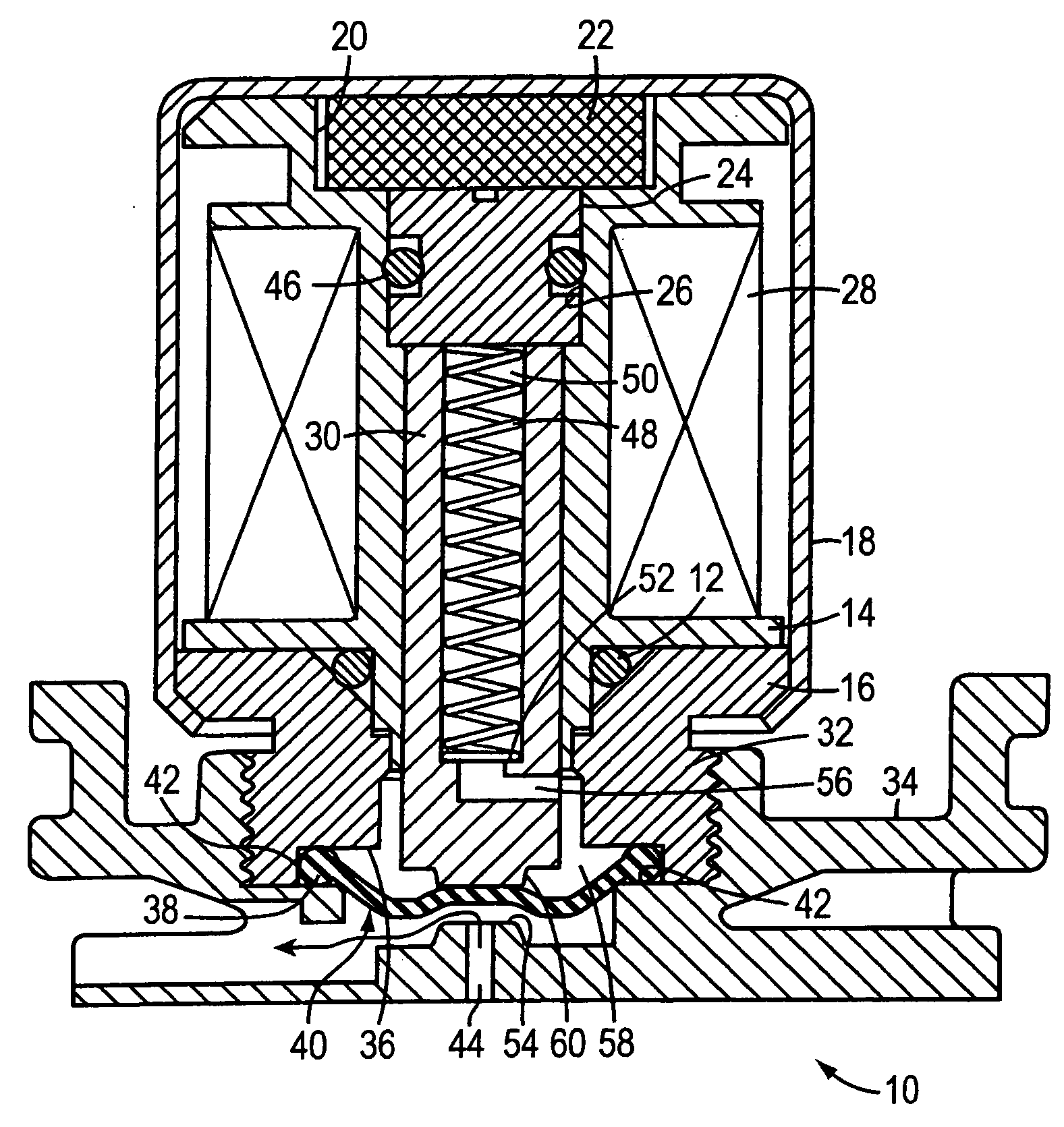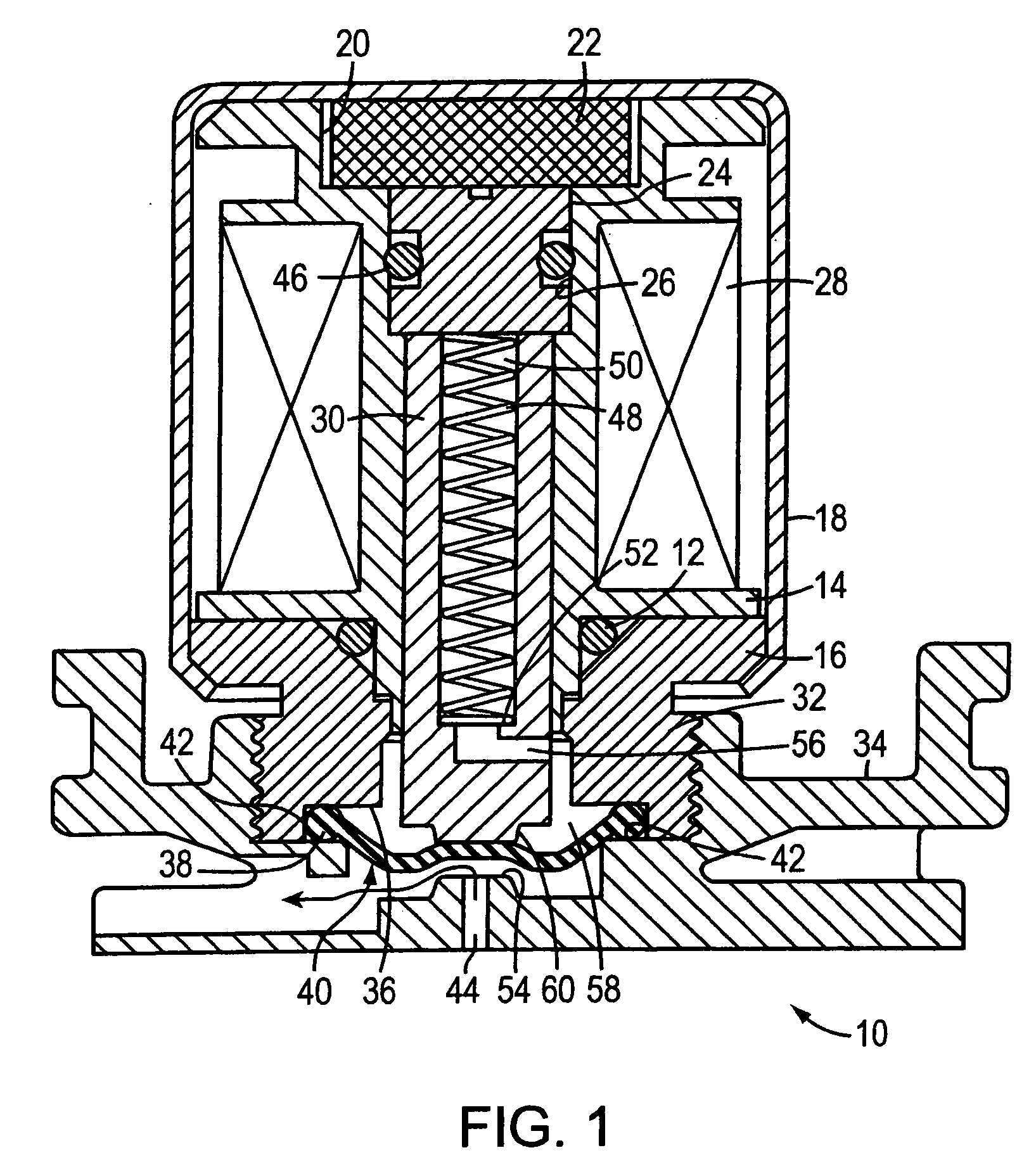Apparatus and method for controlling fluid flow
a fluid flow and apparatus technology, applied in the direction of diaphragm valves, engine diaphragms, operating means/release devices of valves, etc., can solve the problems of metal problems, unnecessarily reducing the longevity of batteries, and deterioration of armatures, so as to reduce energy consumption and significant battery life. increase, the effect of reducing energy was
- Summary
- Abstract
- Description
- Claims
- Application Information
AI Technical Summary
Benefits of technology
Problems solved by technology
Method used
Image
Examples
Embodiment Construction
[0029] Referring to FIG. 1, industrial, agricultural and household systems use various types of valves for controlling fluid flow. An electrically operable valve 10 uses a solenoid to drive a plunger into a valve seat and thereby stop flow through a conduit in which the valve seat is disposed. Specifically, valve actuator 10 includes an actuator base 16, a ferromagnetic pole piece 24, a ferromagnetic armature 30, slideably mounted in an armature pocket formed in pole piece 24, and a solenoid windings 28 wound about a solenoid bobbin 14. Valve 10 also includes a resiliently deformable O-ring 12 that forms a seal between solenoid bobbin 14 and actuator base 16, all of which are held together by a housing 18. At its upper end, bobbin 14 forms a magnet recess 20 formed for a disk-shaped magnet 22. Solenoid housing 18 (i.e., can 18) is crimped at actuator base 16 to hold magnet 22 and pole piece 24 against bobbin 14 and thereby secure windings 28 and actuator base 16 within can 18.
[0030...
PUM
 Login to View More
Login to View More Abstract
Description
Claims
Application Information
 Login to View More
Login to View More - R&D
- Intellectual Property
- Life Sciences
- Materials
- Tech Scout
- Unparalleled Data Quality
- Higher Quality Content
- 60% Fewer Hallucinations
Browse by: Latest US Patents, China's latest patents, Technical Efficacy Thesaurus, Application Domain, Technology Topic, Popular Technical Reports.
© 2025 PatSnap. All rights reserved.Legal|Privacy policy|Modern Slavery Act Transparency Statement|Sitemap|About US| Contact US: help@patsnap.com



